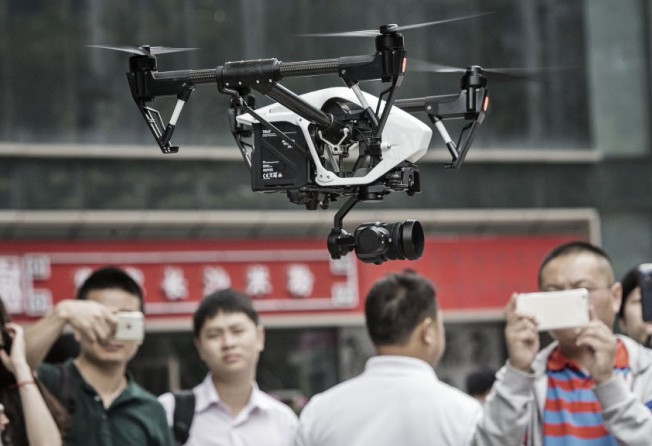Manufacturers soar on demand
Companies fly high on increasing sales, and see the bigger picture for sector's growth

The global market for commercial unmanned aerial vehicles (UAV, or drones) has experienced explosive growth over the past few years, and much of this expansion was driven by the new products and technologies from specialist makers in Shenzhen.
The drone market is huge. According to an estimate in Oppenheimer's February 2016 Drone Report, over 11 million UAV units were shipped annually. Consumer drones account for 10 million of these, but faster growth is expected from the "prosumer" (or professional consumer, with over 1 million units) and professional/commercial segments (with 10,000 units), as new usage applications are opening up for commercial purposes, such as infrastructure inspection, construction and logistics.
DJI (Shenzhen Da-Jiang Innovation Technology), the pioneer of drones for the consumer market, has grown from its home base in Shenzhen to become the world's largest drone maker with an estimated 70 per cent share of the market. The company now has 5,000 staff, including 1,500 research and development staff and engineers, with 16 offices and two flagship stores globally. In the US, about 47 per cent of drones registered with the Federal Aviation Administration for commercial use are DJI products, while in Japan, the company's lines account for over 50 per cent of registered drones for commercial use.
Kevin On, associate director of communications, DJI Asia-Pacific, says Shenzhen was a natural choice as the headquarters for the company.
"Shenzhen is described by many as the 'Silicon Valley of Asia'," he says. "There is a vast pool of engineering and R&D talent in Shenzhen and, with this talent, we are able to develop many of our components in-house, from the gimbal to camera, and the drone itself to the algorithm. This enables us to turn great ideas into products and bring them to the market quickly."
The drone industry presents more possibilities than challenges for DJI, On says.
"We are already changing the way people see the world, and we are seeing huge commercial implications with the use of our aerial technology," he explains. "Some of these trends include search and rescue, surveying and mapping, inspection, agriculture, real estate and construction, sports events and broadcasting; all these will create positive economic and social impacts."
There is also huge potential with the developer community, which will fuel new usage applications, categories and jobs, and as usage cases arise, there will be a growing need for applications for different industries, he adds. On the rising concern over the security and safety of drone flying, On says drone makers are also committed to safe skies.
"Over the past few years, we have proactively incorporated geo-fencing technology into our drones, which will help prevent inadvertent operation in areas that raise safety and security concerns, and areas sensitive to national security," he adds. "In some restricted zones, a DJI drone's software will not permit it to operate at all."
DJI recently launched the Phantom 4 with intelligent features such as obstacle avoidance and a function that allows the flyer to control the direction of the drone by pointing on the screen. It is also the first consumer drone to bring flyers highly advanced computer vision and sensing technology that eases professional aerial imaging. It also features a new "Sport Mode" to offer advanced flyers a taste of drone racing.
Another major Shenzhen-based drone maker, Shenzhen Guav Intelligent Electronics (Guav), says Shenzhen is a fine manufacturing base for drone makers if they can make use of the city's favourable conditions for product development, such as easy access to high-end hardware, software and talents.
Wang Kuiyuan, product manager of Guav, says the value of global drone shipments could reach US$90 billion, and further growth would depend on the laws and regulations imposed by governments around the world on the use of drones; the self-regulatory measures by the industry; and market segmentations.
However, improved regulations are also expected to help pioneer new applications, such as controlling UAVs via mobile networks for the collection of information for big-data analysis.
Guav has recently developed a 4G LTE UAV ground-control station system that allows the flyer to control the drones via the 4G network.
"This means the control of drones will no longer be restricted by the distance," Wang says. "For example, in our office in Shenzhen we have controlled a drone owned by our client in Germany, with a control distance of 9,000km, and we could view all the data and video through the ground control station."
The company's product developments will focus on drone-control software, hardware, propulsion system and flying platform, which will also improve the safety functions of its products, Wang says.